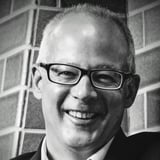Summary
Did you know that the SUS creates biases in your research, affecting one in five people? That’s right! People with disabilities, especially those who use assistive technology, are not considered by most of the questions in the SUS. When the SUS was invented, the author encouraged people to change it to suit different needs. In this talk, Samuel Proulx and Abid Virani from Fable will discuss how Fable adapted the SUS to work for assistive technology users. Drawing from over five thousand hours of research and testing involving assistive technology users, we created the Accessible Usability Scale (AUS). This presentation will include trends in AUS responses since it was released in December of 2020.
Key Insights
-
•
Assistive technologies mainly split into screen readers, screen magnifiers, and alternative navigation devices, each with distinct user needs.
-
•
Screen reader users heavily rely on semantic web structure and proper labeling for efficient navigation.
-
•
Magnification users often supplement their experience with screen reader features to reduce eye strain.
-
•
Alternative navigation users use multiple input methods like voice commands and head mice, providing fallback options.
-
•
Traditional usability labs and standard SUS questionnaires fail to consider unique accessibility challenges and setup of assistive tech users.
-
•
SUS questions like needing technical support or learning speed are confusing or irrelevant to assistive tech users without adaptation.
-
•
Fable created the Accessible Usability Scale to better evaluate assistive tech user experience by adapting question language and scope.
-
•
Preliminary AUS data indicates screen reader users experience the lowest usability scores due to lack of backup input methods.
-
•
Remote usability testing greatly increases participation and authentic results by allowing users to test in familiar, customized environments.
-
•
User skill with assistive tech, experience level, and mental models vary significantly and must be considered beyond linear novice-expert scales.
Notable Quotes
"Assistive technology includes software and hardware that people with disabilities use to access computers."
"Screen readers let us jump directly to content, replicating visual skimming of a web page."
"Expert screen reader users listen at over 300 words per minute and still fully understand the content."
"Magnification can cover the entire screen two to ten times, and users pan around to see different areas."
"Many magnification tools also have screen reader functions to reduce eye strain and help users."
"Alternative navigation users might use voice commands, head mice, or grid coordinates to access elements."
"Traditional usability labs often force assistive tech users to use unfamiliar setups, creating barriers."
"I am a technical person, yet I might still need someone who can see to help me use certain sites."
"Accessibility is a spectrum; if frequent tasks require assistance, the product is inaccessible for me."
"Remote testing helps get closer to real-world results because users are in environments customized for them."
Or choose a question:
















More Videos

"Screen readers let us jump from one heading to another, replicating the experience of skimming a page visually."
Sam ProulxSUS: A System Unusable for Twenty Percent of the Population
December 9, 2021

"We’re trying to build a design operations role that balances top-down governance with bottom-up community building."
Michael LandEstablishing Design Operations in Government
February 18, 2021

"The rebrand caused our NPS to plummet and freaked out our executives — that was the trigger to get serious."
Shipra KayanHow we Built a VoC (Voice of the Customer) Practice at Upwork from the Ground Up
September 30, 2021

"People care about titles way too much. I had a guy whose business card said star-bellied sneak—love that."
Ian SwinsonDesigning and Driving UX Careers
June 8, 2016

"If you’re managing over 100 design practitioners, it makes sense to start looking at a chief of staff role."
Isaac HeyveldExpand DesignOps Leadership as a Chief of Staff
September 8, 2022

"What if product and business actually manage designs and deliver digital communications?"
Amy EvansHow to Create Change
September 25, 2024

"We are stronger when we work together towards a unified goal – that’s our super healing power."
Kate Koch Prateek KalliFlex Your Super Powers: When a Design Ops Team Scales to Power CX
September 30, 2021

"It’s impossible to be angry with a warm cup of tea in your hand."
Dave GrayLiminal Thinking: Sense-making for systems in large organizations
May 14, 2015

"Providing immediate tactical value is the big one for just-in-time curation."
Matt DuignanAtomizing Research: Trend or Trap
March 30, 2020
Latest Books All books
Dig deeper with the Rosenbot
What are effective strategies for designers to introduce systems thinking in organizations resistant to broad perspectives?
How can public sector design teams implement knowledge management to mitigate knowledge loss during staff turnover?
How can design operations demonstrate their value when their work is often invisible until failure?
















